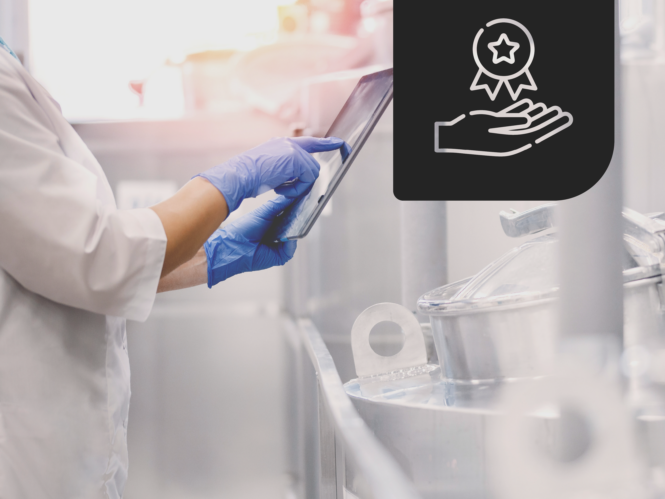EU GMP Annex 1 update: what has changed, and what are the impacts?
4/10/2022

EU GMP Annex 1 on good manufacturing practice defines rules for the manufacture of sterile medicinal products. Based on a 2008 version and after several years of comments and revisions, this new 2022 version of Annex 1 is therefore essential for aligning with regulatory changes in production and the environment and for updating the quality standards on the manufacture of sterile medicinal products. It sets out more stringent requirements to minimise the risk of microbial, particulate and pyrogen contamination.
This update will obviously bring about several changes for companies that produce sterile medicinal products. What are these changes that will affect your working methods?
What are the expectations concerning the PQS, QRM, and the CCS?
The Pharmaceutical Quality System (PQS) has been reinforced in this update compared with the requirements set out in EU GMP and the ICH Q10 guideline. This PQS is tailored to sterile medicinal products and is therefore stricter to ensure a maximum quality level for patients. It requires that all activities be controlled to reduce the risk of contamination.
Quality Risk Management (QRM) and risk assessment tools are mentioned from the definition of the framework for Annex 1. This framework stresses the fact that this risk-based approach should be considered at each stage and should provide an objective and scientific means of identifying, evaluating and reducing all potential risks of product and process contamination.
The Contamination Control Strategy (CCS) is the tool for analysing risks and controlling the risk of contamination. This strategy is mentioned throughout the various sections of the Annex with the aims of giving assurance of sterility and ensuring the manufacture of high-quality sterile medicinal products. This strategy should consider all the stages in the life cycle of a medicinal product. An overall CCS that is an integral part of the site’s quality system should be put into place to present the company’s approach to limiting the risk of contamination, in addition to the specific CCS for each production run. It should include a definition of critical control points, demonstrate how the state of control is scientifically established, and assess the effectiveness of the controls and monitoring measures employed to manage the risk of contamination and guarantee the quality of products and the safety of patients.
Controlled contamination
Moreover, in Annex 1, all processes are set out in detail to define the minimum requirements that are expected or need to be defined through a risk analysis to prevent contamination in flows of activities including utilities, the environment, the equipment concerned, and controls throughout the production of sterile medicinal products.
For facilities, the classification of zones, pass-through areas between zones with airlocks and personnel and material movement, and unidirectional airflows, airspeed and pressure differences are considered to avoid carry-over contamination. This microbial monitoring is required for all facilities, processes, personnel and equipment.
Controls of utilities should be assessed and quantified and should be proportional to the quality risk associated with the product. This monitoring should be defined for each point of use, whether for water, steam or fluids in general having an impact on the production of the sterile product.
Barrier technologies, such as RABS and isolators, are increasingly recommended for Class A zones and for the prevention of contamination in aseptic processes. They are described here to optimise the effectiveness of their use through the various steps of these aseptic processes: class of use, use, qualification, cleaning, and disinfection.
A controlled environment
A large part of this Annex then sets out the classification, qualification and particulate monitoring of the environment, stressing the need to take all variables into account – the product, process, installation, equipment, operations, and historical data – to establish a qualification and ensure effective monitoring. This particulate monitoring of the environment is aligned with the ISO 14644 standard and does not include any new points. It covers the following three elements:
- environmental monitoring (non-viable particles);
- environmental and personnel monitoring (viable particles);
- aseptic process simulation (APS) with, for example, the media fill test (MFT).
This Annex also includes the concepts of disinfection and decontamination.
For production, the PQS and CCS require that risks be identified to define risk control methods and acceptance criteria as well as requirements for monitoring and for accepted residual risks. The update focuses on two points: sterilisation and specific technologies. The part on sterilisation does not include many changes; however, it strongly recommends a pre-use post sterilisation integrity test (PUPSIT) or else a thorough risk assessment. The specific technologies that are recommended include Form-Fill-Seal (FFS) and Blow-Fill-Seal (BFS). Lyophilisation appears, along with the related requirements.
For quality control, the sterility test applied to the finished product should only be regarded as the last control in a series. Process knowledge and expertise are once again essential to control contamination.
Conclusion
In conclusion, the update to EU GMP Annex 1 is an important milestone for sterile medicinal product companies with the clarification of certain points and the reinforcement and addition of new concepts and methodologies including use of the PQS, QRM, and the CCS. The aims are to minimise and control microbial, particulate and pyrogen contamination. Knowledge and expertise relating to products, processes and equipment are essential and should be at the heart of the strategies developed by manufacturers to guarantee the quality of products and the safety of patients.
Efor, the European leader in life sciences consulting, can help you implement the good practices set out in EU GMP Annex 1.
Feel free to contact us using the contact form.
Efor group
Our CSR commitments
Aware of our social and environmental responsibility, we act every day to make a positive impact on society.
Nos actualités
Suivez toutes nos infos santé


